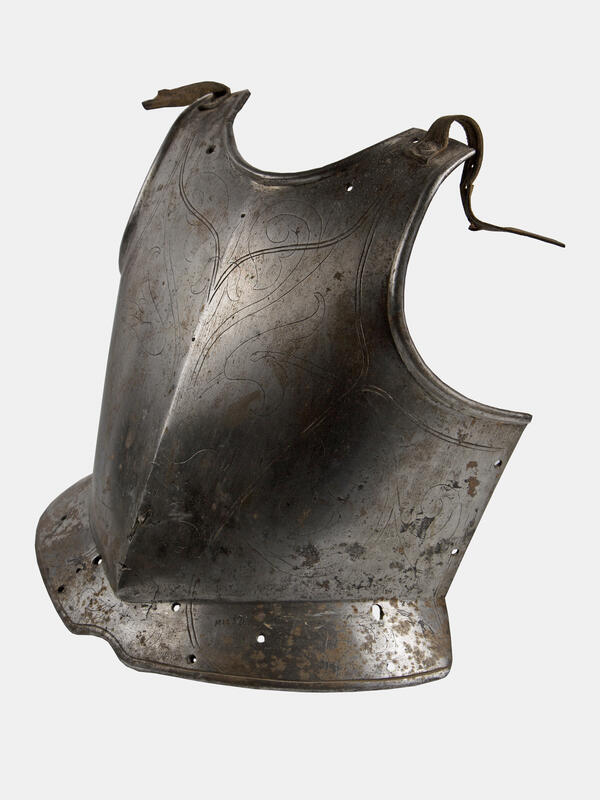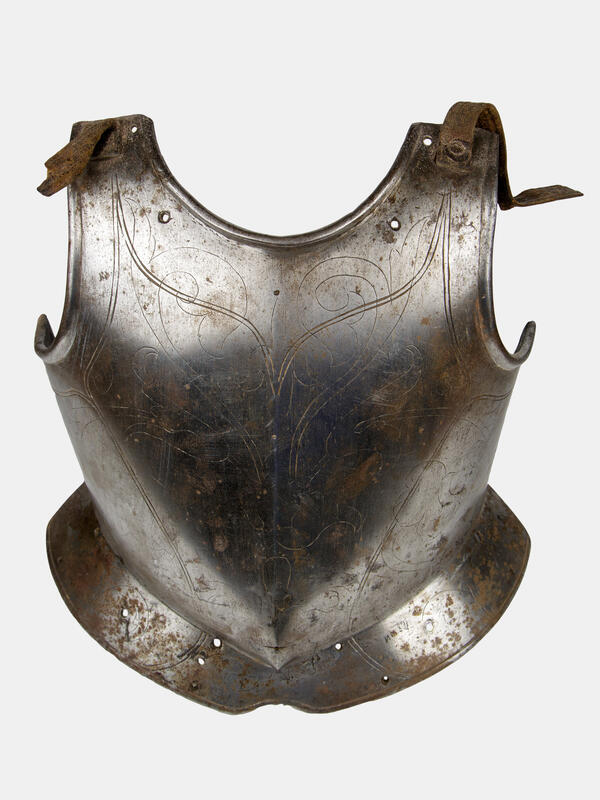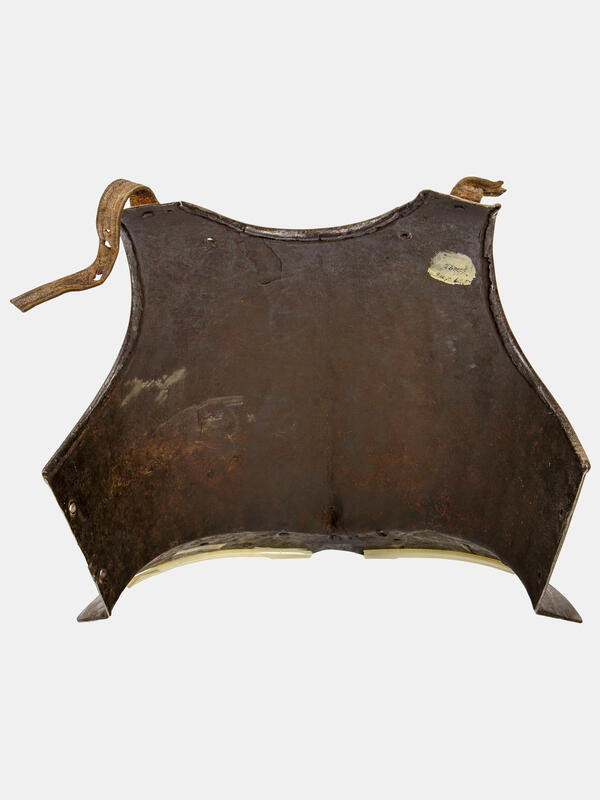A cuirass is a piece of body armor which protects the wearer’s chest, stomach and back. It can consist of one or more metal plates and its distinctive feature is that it imitates the anatomy of the male body.
A cuirass could be worn as an element of armor or as the only protection. The name “cuirass” comes from the French language and literally means “leather breastplate”, since the base of the cuirass was made of felt and boiled leather.
The forerunners of a cuirass appeared in ancient Greece: the protective armor reached the knees of warriors and was intended for chariot riders. Roman legionnaires used a lightweight version of the cuirass — the lorica, which mimicked the muscles or consisted of separate strips that did not limit the ability of the wearer to move in different directions.
In the 14th century, cuirasses gained wide popularity in medieval Europe and became an integral part of knightly military equipment. Cuirasses were mass-produced for regular armies; they were used by both foot troops and cavalry. The thickness of the cuirass plates increased with the development of firearms. Short-barreled weapons, like a crossbow, rarely penetrated a cuirass, but long-barreled, large-caliber muskets were much more powerful.
The infantry stopped using armor at the beginning of the 18th century, after the transition to mass conscript armies. Instead of better protection, the riflemen received new weapons — a lightweight version of the musket with a bayonet for close combat. At the same time, pikemen — warriors with five-meter peaks — stopped being part of European armies.
Heavy cavalry retained the cuirass and helmet in their uniform until the second half of the 19th century, and in some armies until World War I. By that time, the cuirass served only as protection against bladed weapons and shrapnel.
In Russia, cuirasses appeared in the 17th century in regiments of the new system, based on military regulations and the experience of European armies. In the 18th and 19th centuries, cuirasses were widely used in the Russian cavalry and were preserved as an element of ceremonial uniform until 1917.
The cuirass from the collection of the Tula Museum is a product of fairly high quality for its time. It could have belonged to a noble warrior of high rank.





